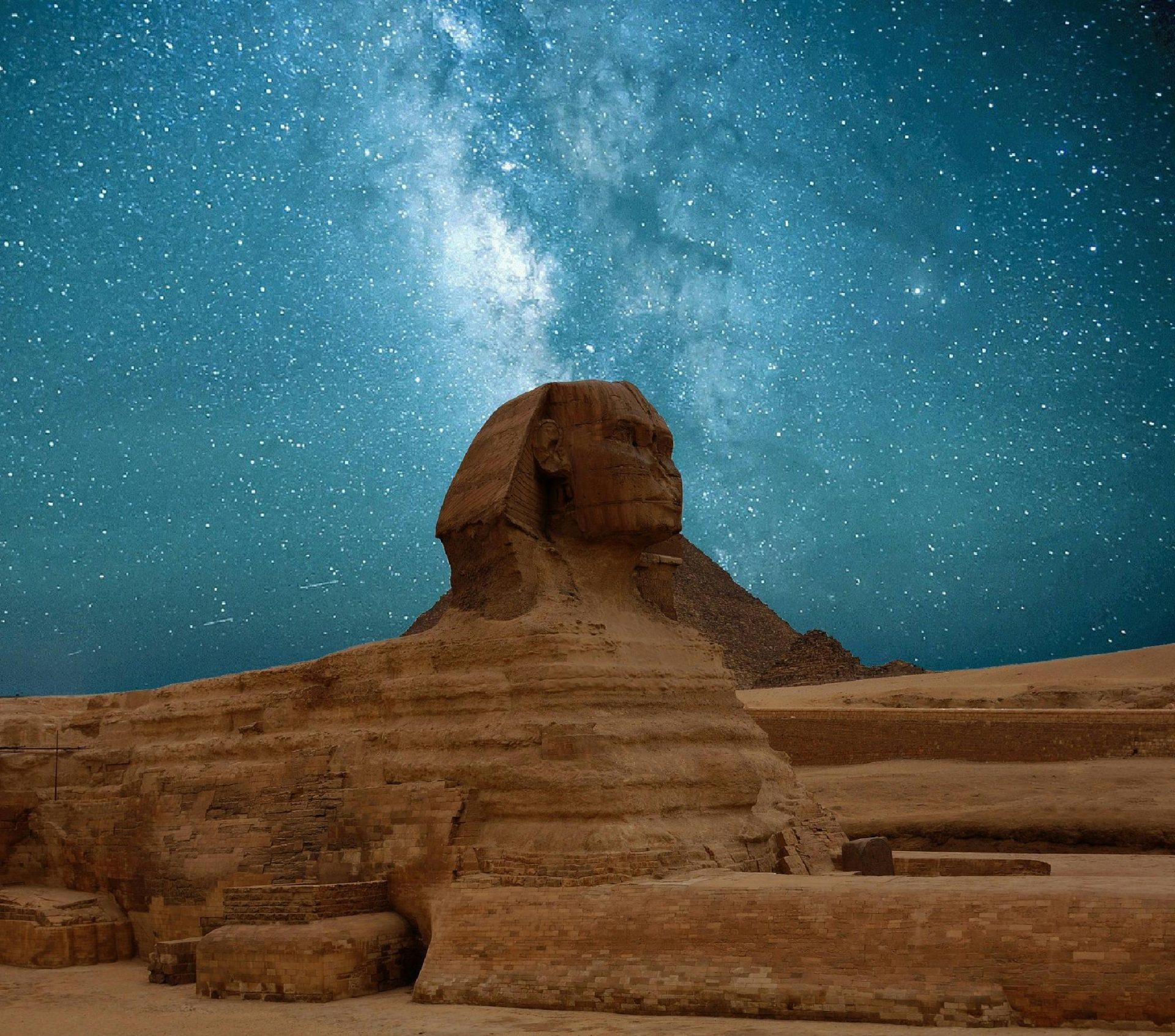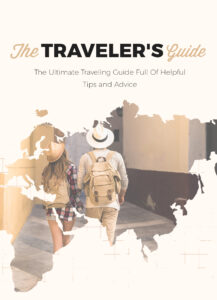The Art of Slow Travel: Embracing the Journey

Before diving in, please note: This post is for informational purposes only. If you’d like to know more about how we approach topics, feel free to check out our friendly Disclaimer Page.
Hey there, amazing readers! 🖐️ Just a quick note: yes, we know there are a lot of ads here. Trust us, we get it—it’s not the prettiest look, but they help us keep this blog alive and kicking. Those pesky little ads cover the costs of all the behind-the-scenes magic, from hosting and tech stuff to creating content we hope you’ll love.
We’re committed to delivering quality posts, and your support (even just sticking around despite the ads) means everything to us. So, bear with us, and thanks for helping us keep the good vibes rolling. Now, on to the fun stuff! 😉
TRANSLATE BUTTON AT THE END OF THE ARTICLE
A Quick Overview
In a world that often rushes by, slow travel invites us to hit the brakes.
It encourages us to savor every moment of our journey rather than racing to check off destinations.
This travel philosophy is more than just a trend; it’s a mindset.
By embracing slow travel, we can foster deeper connections with the places we visit, the cultures we immerse ourselves in, and even with ourselves.
So, let’s dive into the art of slow travel and discover how to truly embrace the journey.
What Is Slow Travel? Discovering a New Way to Explore
Slow travel is about taking the scenic route, both literally and figuratively.
It’s a philosophy that encourages travelers to slow down and immerse themselves in each destination.
Imagine wandering through cobblestone streets without a watch glued to your wrist.
Instead of hopping from one tourist spot to another, slow travel promotes spending quality time in each place.
This approach can take many forms.
It might mean spending a week in a small village instead of a few days in a bustling city.
It could involve walking or biking instead of driving or flying.
The essence of slow travel is about cherishing experiences over ticking boxes.
Imagine visiting a vineyard and instead of just a quick tour, you spend a whole afternoon tasting wines, chatting with the vintner, and learning about the local land.
That’s the spirit of slow travel!
It’s about enriching our travel experiences.
The concept ties closely to the idea of mindfulness—being present and aware of each moment.
Slow travel invites us to soak in the sights, sounds, and smells around us.
It’s an opportunity to create lasting memories instead of fleeting moments.
The Joy of Taking Your Time: Why Slow Travel Matters
Why does slowing down matter?
The answer is simple: life is richer when we take the time to enjoy it.
Fast travel often leaves us feeling exhausted and disconnected.
But when we choose to slow down, we open ourselves up to new experiences and deeper connections.
For instance, let’s say you’re visiting Italy.
A whirlwind trip might have you racing through Rome, Florence, and Venice.
But what if you lingered in one town, like Lucca?
You could catch a local concert, join a cooking class, or simply relax in a café, sipping espresso as you watch the world go by.
Taking your time allows for spontaneity.
You may stumble upon that charming little artisan shop or a local festival you’d have missed in a hurry.
It’s about allowing serendipity to play a role in your travels.
Moreover, slow travel is often more economical.
Discover "The Traveler’s Guide: Your Ultimate Companion for Every Adventure ✈️"
By staying in one place longer, you can save on transportation costs and find ways to enjoy local hospitality without breaking the bank.
Finally, it provides a chance for reflection.
When you’re not rushing from one activity to the next, you can ponder your experiences and how they resonate with you.
This time to reflect can lead to personal growth and a renewed perspective on life.
Benefits of Slow Travel: Beyond Just the Destination
Slow travel comes with a treasure trove of benefits that reach far beyond just visiting new places.
Here are some of the most noteworthy:
Deeper Connections: By spending more time in one place, I’ve been able to build relationships with locals.
Those connections often become the highlight of my travels.
Enhanced Experiences: Slowing down allows for immersive experiences that fast travel simply can’t offer.
I recall a trip where I took a ceramic workshop in a small town; it’s something I’ll cherish forever.
Reduced Stress: Fast-paced trips can lead to burnout.
The slower pace of travel helps keep stress at bay, allowing me to enjoy every moment fully.
Cultural Learning: When I take my time, I can learn more about the local culture—its history, customs, and traditions—thereby enriching my travel experience.
Sustainable Tourism: Slow travel often means supporting small businesses and reducing the carbon footprint by traveling less frequently but more mindfully.
Improved Health: Walking more instead of using transportation improves physical health.
I find that I feel more energetic and alive!
Fulfilled Curiosity: Slow travel lets my curiosity lead the way.
Instead of a rigid itinerary, I can explore hidden gems and unexpected attractions.
Mindfulness: Embracing the moment can lead to personal insights.
Each trip becomes a journey of self-discovery.
Appreciation for Nature: Spending time in one location also allows for a deeper appreciation of the surrounding environment.
I’ve found joy in simply watching the sunset from a local park.
Gratitude: With a slower pace, I often find myself more thankful for the small things—a friendly smile, a delicious meal, or a stunning view.
Tips for Planning Your Slow Travel Adventure
Planning a slow travel adventure doesn’t have to be complicated.
Here are some practical tips to get you started:
Choose a Base: Select a single location to explore rather than multiple cities.
This could be a charming town or a vibrant city.
Limit Your Itinerary: Give yourself just a few activities per day.
This way, you won’t feel rushed and can enjoy each experience fully.
Stay Longer: Consider renting a home or apartment.
This can provide an authentic feel of living like a local.
Travel Slow: If possible, use trains, bikes, or even your own two feet to get around.
It’s a great way to absorb the local atmosphere.
Engage with Locals: Attend community events or classes.
You might find locals to share their stories and recommendations.
Be Flexible: Allow your plans to change.
If you discover something interesting, follow that shiny new lead.
Take Breaks: Schedule downtime to relax.
Whether it’s reading in a park or enjoying a leisurely meal, it can enrich your experience.
Document Your Journey: Keep a journal or blog about your travels.
Reflecting on your experiences can enhance your enjoyment.
Ask for Recommendations: Seek out advice from locals on what to see and do.
They will often know the best spots that tourists miss.
Be Present: Finally, focus on mindfulness.
Engage your senses and truly immerse yourself in your surroundings.
Choosing Destinations That Encourage Slow Travel
Not every place is conducive to the slow travel mindset.
Here are some types of destinations that promote a more relaxed pace:
Small Towns: Quaint towns, often away from tourist traps, encourage exploration on foot.
Think of places like Lucca in Italy or Chefchaouen in Morocco.
Countryside Retreats: Rural areas often have slower rhythms.
Spending time in the countryside can provide serenity and beauty.
Cultural Hotspots: Cities with rich histories, like Kyoto or Granada, offer deep cultural experiences that beg to be explored slowly.
Natural Parks: Places like the national parks in the U.S. invite you to hike and explore at your own pace, appreciating nature’s beauty.
Islands: Smaller islands often promote a slower lifestyle.
Think of places like the Greek Islands or the Caribbean.
Villages: Many countries have villages that celebrate tradition and local culture, making them perfect for slow exploration.
When choosing your destination, consider how you want to connect with the space.
The more it aligns with your desire for a slower pace, the richer your experience will be.
Embracing Local Cultures: Engage with Communities
Engaging with local cultures is perhaps one of the most rewarding aspects of slow travel.
It transforms your trip from a series of sights into a meaningful journey.
Here are some ways to get involved:
Participate in Workshops: From cooking classes to art workshops, these activities allow you to learn and contribute to the local culture.
Attend Festivals: Local festivals can provide a colorful, immersive experience.
They also allow you to interact with local traditions and customs.
Volunteer: Consider lending a hand to a local organization.
It’s a great way to meet people while giving back.
Explore Local Markets: Visiting farmer’s markets or artisan fairs not only supports local businesses but also lets you taste authentic flavors.
Dine Locally: Try to eat at family-run restaurants or street vendors.
The food often tells a story of the culture.
Seek Out Local Guides: Hiring a local guide can provide insights that you won’t find in guidebooks.
They often have a wealth of knowledge about their culture.
Learn the Language: Even picking up a few phrases can go a long way and shows respect for the local culture.
Share Stories: Don’t hesitate to share your own experiences with locals.
Genuine exchanges can lead to memorable connections.
Respect Traditions: Being aware of and respecting local customs is crucial.
It shows appreciation for their culture.
Stay Open-Minded: Every culture has something to teach us.
Approach your travels with curiosity and openness.
The Power of Mindfulness in Your Travel Experience
Mindfulness is a fundamental aspect of slow travel.
It encourages us to be present in each moment.
Here’s how to harness its power during your travels:
Practice Gratitude: Each day, take a moment to appreciate where you are.
Reflecting on simple joys can enhance your experience.
Limit Distractions: Consider leaving your phone in your bag.
This can help you engage more fully with your surroundings.
Savor Experiences: Whether it’s a meal or a beautiful view, take time to relish the moment.
Enjoy each bite or breathe in the scenery.
Meditation: Even a few minutes of mindfulness meditation each day can help ground you and enhance your travels.
Breathwork: Simple breathing exercises can help you reconnect with the moment, especially during busy days.
Engage All Senses: Notice the scents, sounds, and sights around you.
Engaging your senses fully can deepen your experience.
Reflect Often: Journaling about your experiences can help solidify memories and insights from your travels.
Connect with Nature: Spend time outdoors, whether it’s hiking or just sitting in a park.
Nature has a unique way of bringing peace.
Mindful Conversations: Be present in your interactions with others.
Listen actively and engage meaningfully.
Embrace Silence: Allow yourself moments of quiet.
Sometimes, silence can be the most profound teacher.
Sustainable Practices: Traveling Responsibly and Slowly
Sustainability is a growing concern for many travelers today.
Slow travel naturally aligns with sustainable practices.
Here’s how to travel responsibly:
Support Local Businesses: Choose to eat at local eateries, shop at artisan stores, and stay at family-run accommodations.
Reduce Carbon Footprint: Opt for slower modes of transportation, like trains or buses, instead of flying.
Be Mindful of Waste: Carry a reusable water bottle and shopping bag to minimize single-use plastics.
Participate in Eco-Tours: Look for tours that promote conservation and respect for local environments.
Educate Yourself: Understanding the ecological issues facing your destination can foster a deeper appreciation and awareness.
Respect Wildlife: Avoid activities that exploit animals and choose ethical wildlife experiences.
Leave No Trace: When exploring nature, follow the Leave No Trace principles to minimize your impact.
Offset Your Carbon: When flying is necessary, consider carbon offset programs to balance your impact.
Engage in Conservation Efforts: Many communities welcome tourists to participate in conservation projects.
Practice Responsible Photography: Avoid disturbing wildlife or intruding on private property while taking photos.
How to Pack Light for Your Extended Journey
Packing light is essential for slow travel.
It makes moving around easier and allows for more spontaneity.
Here are some tips for packing efficiently:
Choose Versatile Clothing: Select items that can be mixed and matched.
Neutral colors can help expand your wardrobe.
Limit Footwear: Bring only a couple of pairs—comfortable walking shoes and something nicer for evenings.
Bring Layers: Weather can change, so layers can keep you comfortable in varying climates.
Use Packing Cubes: They help keep your belongings organized and maximize suitcase space.
Plan for Laundry: If you’re on an extended trip, plan to do laundry rather than packing for each day.
Minimize Toiletries: Opt for travel-sized products or use solid shampoos and soaps to save space.
Digitalize When Possible: E-books and PDFs can save space compared to physical books.
Pack a Reusable Bag: They can be handy for shopping or laundry days and can be folded up easily.
Leave Room for Souvenirs: If you plan to shop locally, make sure you have space to bring items back.
Stay Minimalist: Remember that you can buy what you need along the way.
Don’t overpack just in case!
Activities That Enhance Slow Travel Experiences
There are plenty of activities that promote the philosophy of slow travel.
Here are some engaging ways to immerse yourself:
Walking Tours: Explore a new city on foot.
It allows for deeper interaction with your surroundings.
Cooking Classes: Learning to cook local dishes not only fills your belly but also connects you to the culture.
Artisanal Workshops: Whether pottery or weaving, these workshops can provide insight into local traditions.
Nature Hikes: Take your time exploring natural landscapes.
Hiking allows you to connect with nature while moving at your own pace.
Yoga Retreats: A peaceful way to connect with your inner self and the environment around you.
Volunteer Opportunities: Find local organizations that welcome travelers.
It’s a way to give back while learning about the community.
Cultural Immersion Programs: Some programs allow you to live with a local family for an authentic experience.
Photography: Capture moments and immerse yourself in the art of observation.
It encourages you to really see your surroundings.
Reading: Take a book related to your destination and relax in a park or café while you soak in the atmosphere.
Attend Local Events: Always keep an eye out for local happenings.
They often provide unique insights into the culture.
The Role of Food: Savoring Local Flavors and Traditions
Food is one of the most delicious ways to embrace slow travel.
It’s a gateway to understanding local culture.
Here’s how to dive into culinary experiences:
Street Food: Trying local street food can be an adventure.
It’s often authentic and packed with flavor.
Market Visits: Explore local markets—there’s no better way to understand a culture than through its food sources.
Cooking with Locals: Join a cooking class or offer to cook with a local family to learn firsthand about traditional dishes.
Dining Slowly: Instead of rushing through meals, enjoy the experience.
Savor each bite and appreciate the flavors.
Pairing with Local Drinks: Enjoy local wines, beers, or teas that complement regional dishes.
Attend Food Festivals: These events celebrate local cuisines and often include tastings, cooking demonstrations, and more.
Food Tours: Join a guided food tour to sample various dishes and learn about their history.
Farm-to-Table Experiences: Seek out restaurants that source their ingredients from local farms.
It supports sustainability and showcases the best of local produce.
Document Your Culinary Journey: Keep a food journal or blog about your experiences.
Reflecting on flavors and meals can enhance your appreciation.
Share Meals with Locals: Engage with locals over a meal.
This can lead to heartwarming conversations and insights into the culture.
Reflecting on Your Journey: Keeping Memories Alive
As your slow travel adventure comes to an end, taking time to reflect is essential.
Here’s how to preserve those memories:
Journaling: Writing about your experiences helps crystallize memories and insights.
Photo Books: Create a photo book or album that captures the highlights of your journey.
Share Stories: Tell friends and family about your adventures.
Reliving those moments can bring joy.
Create a Blog: Document your travels online.
It’s a great way to preserve memories and inspire others.
Postcards: Send postcards to yourself or loved ones about your travels—it’s a charming way to remember your journey.
Collect Souvenirs: Find small, meaningful tokens that serve as reminders of your experiences.
Engage with Fellow Travelers: Discuss your journeys with others.
They may have similar stories or insights to share.
Start a Scrapbook: Collect tickets, brochures, and other memorabilia to create a visual record of your travels.
Meditate on Your Experiences: Spend some quiet time reflecting on your journey and what you learned.
Plan Your Next Adventure: As you reflect, think about where you’d like to go next.
Slow travel can be a lifelong journey!
Conclusion
The art of slow travel invites us to embrace the journey, savor experiences, and connect with the places we visit.
It’s not just about where we go, but how we get there.
By slowing down, we can cultivate deeper relationships, appreciate local cultures, and find joy in the simple moments.
Whether it’s savoring a meal, engaging with locals, or simply taking a moment to breathe in the surroundings, slow travel offers a rich tapestry of experiences waiting to be woven into our lives.
So, the next time you plan a trip, consider taking it slow.
You might just find that the journey is the most beautiful part of the adventure.

The Enlightenment Journey is a remarkable collection of writings authored by a distinguished group of experts in the fields of spirituality, new age, and esoteric knowledge.
This anthology features a diverse assembly of well-experienced authors who bring their profound insights and credible perspectives to the forefront.
Each contributor possesses a wealth of knowledge and wisdom, making them authorities in their respective domains.
Together, they offer readers a transformative journey into the realms of spiritual growth, self-discovery, and esoteric enlightenment.
The Enlightenment Journey is a testament to the collective expertise of these luminaries, providing readers with a rich tapestry of ideas and information to illuminate their spiritual path.
Our Diverse Expertise 🌟
While our primary focus is on spirituality and esotericism, we are equally passionate about exploring a wide range of other topics and niches 🌍📚. Our experienced team is dedicated to delivering high-quality, informative content across various subjects ✨.
To ensure we provide the most accurate and valuable insights, we collaborate with trusted experts in their respective domains 🧑🏫👩🏫. This allows us to offer well-rounded perspectives and knowledge to our readers.
Our blog originally focused on spirituality and metaphysics, but we’ve since expanded to cover a wide range of niches. Don’t worry—we continue to publish a lot of articles on spirituality! Frequently visit our blog to explore our diverse content and stay tuned for more insightful reads.






